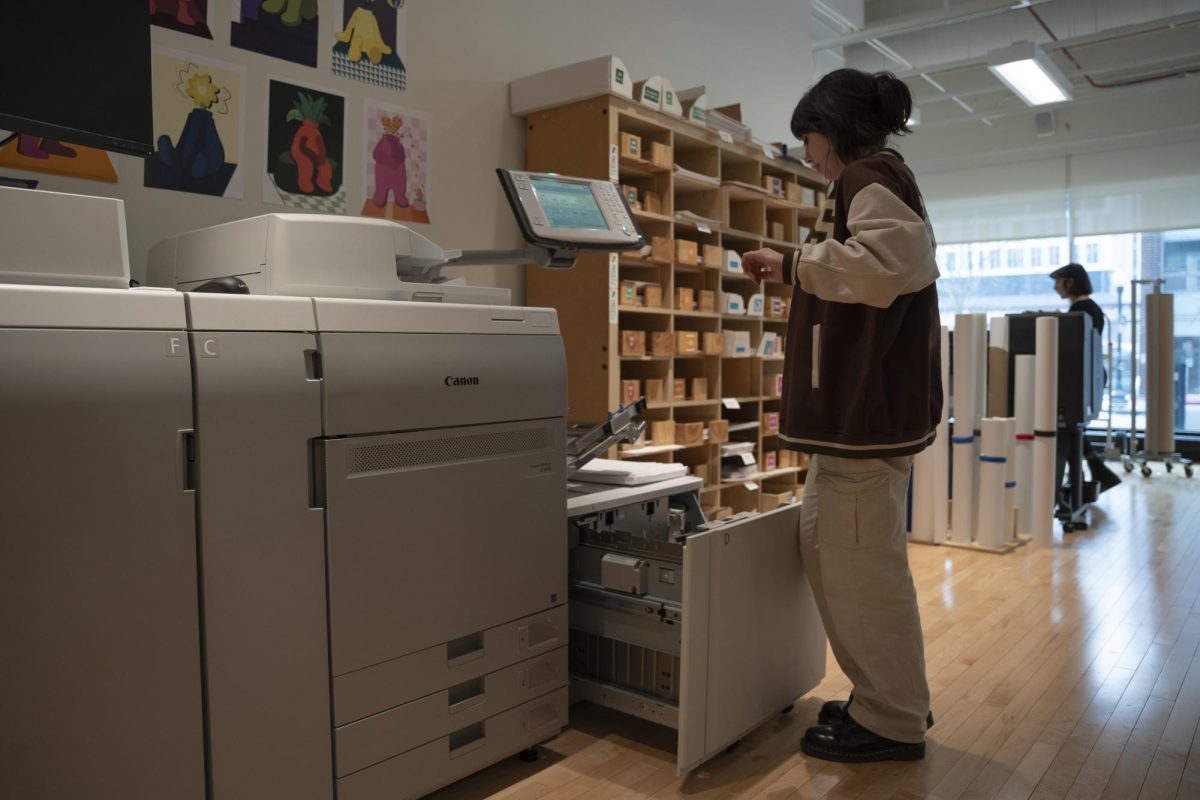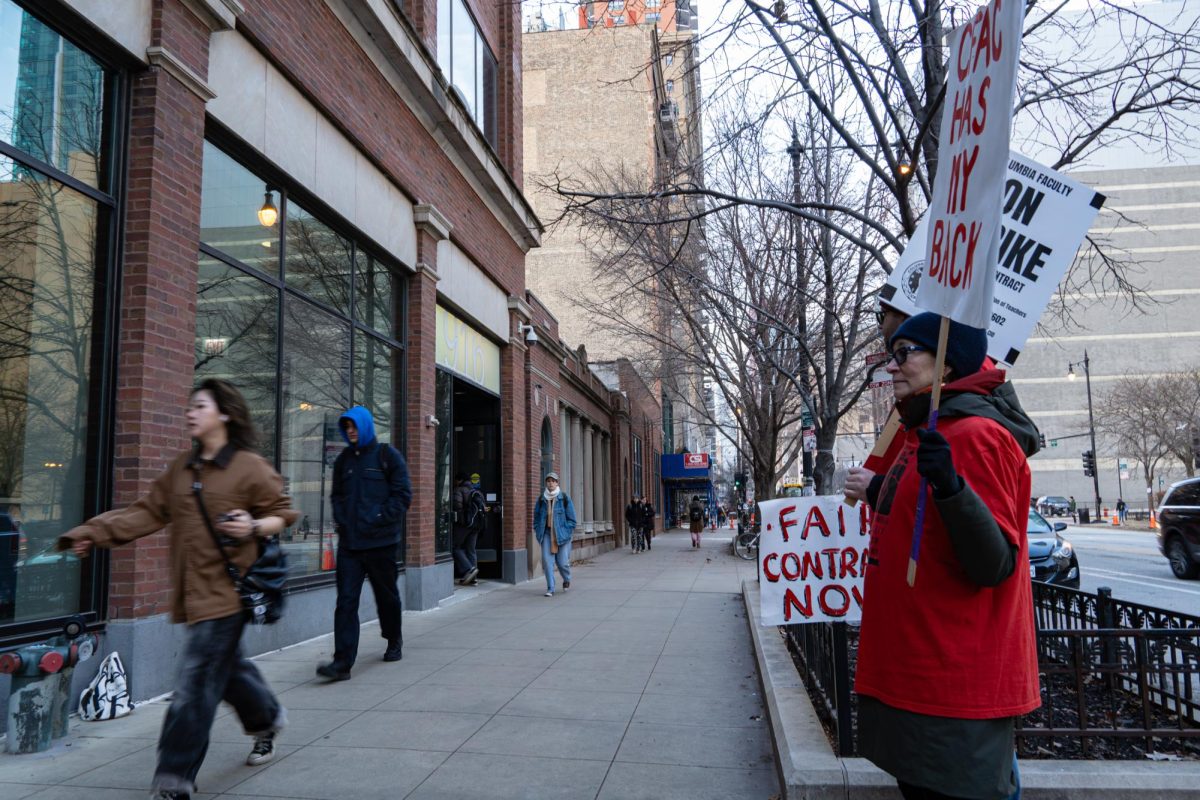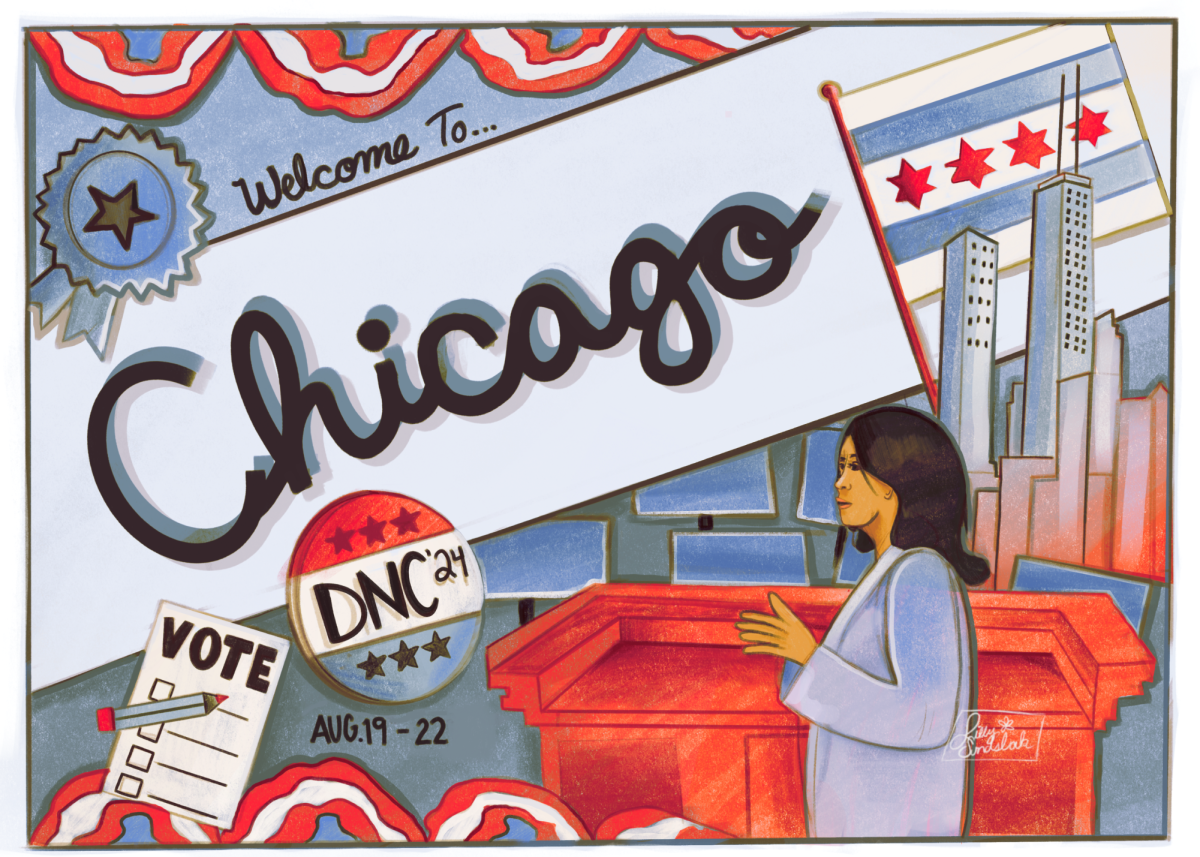President and CEO Kwang-Wu Kim’s $252,000 bonus from fiscal year 2021 has been a major point of contention as the part-time faculty union’s strike continues into a fourth week.
Even as other issues have taken hold like course cuts, increased class sizes and now replacement teachers, nearly every protest, demonstration and picket in the past month has featured at least one sign calling out Kim for his salary.
That’s because the disparity between CEO pay and the average worker in any institution, including at Columbia, which relies on a part-time workforce to teach the majority of its classes, has contributed to a resurgence for organized labor, as Stephen Franklin, a former part-time instructor at the college, recently noted in an article for In These Times.
By the numbers: The Chronicle took a look at the facts behind the bonuses, drawing on information available to the public.
Kim’s bonus came partly from deferred compensation, according to tax filings. But he and five other cabinet members received a one-time bonus for steering the college through the pandemic.
The majority of the bonus – $200,000 on top of his $509,748 base salary – was deferred compensation. Deferred compensation is included in the president’s contract to help incentivize him to stay at the college.
The remaining $52,000 was the one-time bonus awarded to Kim from the Board of Trustees. He was one of five cabinet members who received a bonus. The other administrators who received a pandemic-related bonus in fiscal year 2021 were Senior Vice President of Business Affairs and CFO Jerry Tarrer, Senior Vice President and Provost Marcella David, Vice President of Enrollment Management Michael Joseph and Chief of Staff Laurent Pernot. They each received $20,000 from the Board of Trustees.
This information is in the college’s 990 filings, which are publicly available on Columbia’s website.
Associate Vice President of Security Ron Sodini also received a $20,000 bonus, said Lambrini Lukidis, associate vice president of Strategic Communications and External Relations.
None of the other cabinet members – all members of the administration – got a pandemic-related bonus.
What’s at stake: The union is demanding more financial transparency from the college and has accused it of manufacturing a financial crisis, including a $20 million deficit the college is trying to close through tuition increases and a streamlined course catalog that will result in fewer opportunities for part-time faculty to teach.
Along with students, the union has rallied against course cuts and increased class sizes that are part of the cost-cutting measures. The negotiations are now at a stalemate, and the college has called in a federal mediator ahead of the Thanksgiving break that starts Wednesday, Nov. 22.
At a student government-sponsored town hall with Kim on Thursday night, Nov. 16, angry students blasted administrators for taking bonuses while also raising tuition. Asked about tuition at the town, Kim told students, “I think it’s likely that tuition will continue to increase. The question is more the rate of increase.”
Students also wanted to know what sacrifices administrators themselves have made. In response, Kim pointed to operational cuts, staff reductions and increased workload for full-time faculty.
In comparison: Bonus compensation is not uncommon for college presidents, according to data from the Chronicle of Higher Education. The publication looked at base pay, bonuses and benefits for 307 chief executive officers at private colleges that had expenditures of $100 or more in 2020.
DePaul University President A. Gabriel Esteban, who stepped down in 2021, received more than $1 million, with a base salary of $732,600 and a bonus of $192,672. Other compensation was more than $100,000.
Alan W. Cramb, who retired as president of the Illinois Institute of Technology, made $733,518 in 2020, with a base pay of $672,466 and no bonus. He made about $50,000 in other benefits and compensation.
As is typically the case for college and university heads, Kim’s compensation is determined by the college’s Board of Trustees. It is based on “a variety of factors, including performance and the benchmarking of presidential pay at comparable institutions,” Lukidis said in an email.
The 990-tax form, which provides a breakdown of the president and top administrators, is filed on an annual basis to examine the financial health of the college. The 990-tax form is specifically for nonprofit institutions, which Columbia is. The college has repeatedly denied union claims that the college is intending to become a for-profit, which would change the way Columbia is run and its legal responsibilities.
Kim reports to the Board of Trustees, which includes nine alumni and non-voting faculty and student representatives who are unpaid. It is headed by John M. Holmes, chairman, president and CEO of AAR Corp., which provides aviation services to commercial and government customers
What else happened: In an exchange at a demonstration during the college’s Family Weekend last month,CFAC President Diana Vallera criticized Kim’s bonus, though he corrected the number she initially gave and noted that the majority of the bonus “was part of the deferred compensation agreement that’s in my contract.”
On behalf of the union, students also demanded that Kim and David step down, although it’s not clear how much money that would save the college because they have contracts that would need to be paid off. Kim has since said he has no plans to resign.
Two weeks later, dozens of students and some part-time faculty marched to Kim’s residence on Friday, Nov. 10, demanding the administration meet the union’s demands and reimburse students for tuition over the days their classes have been canceled due to the strike.
The union and student supporters of CFAC have said the college should sell Kim’s residence in Gold Coast to help ease the budget, but Kim said he will not sell it, as it is a part of his contract.
The union also has continued to call for the college to release a “line-item budget.” It provided some additional financial information, including a snapshot of expense trends, in an Oct. 23 email to the campus community.
What students are saying:
Adilene Vega, a first-year art history major, said she believes the bonus money should have gone back into the college itself, to help students get back in the classroom after COVID-19.
“I feel like it should have gone back into the school itself to help it recover, rather than administrators,” Vega said.
Shannon Lorigan, a senior animation major, said the money should have gone to people teaching at the time or to the COVID Task Force, a group of administrators, faculty and union representatives that met to work through COVID. It disbanded earlier this semester.
“Professors take a lot of crap already, so I think it should have gone back to them,” Lorigan said. “As we’ve seen from the strike, it does not seem like the college is helping many professors.”






















